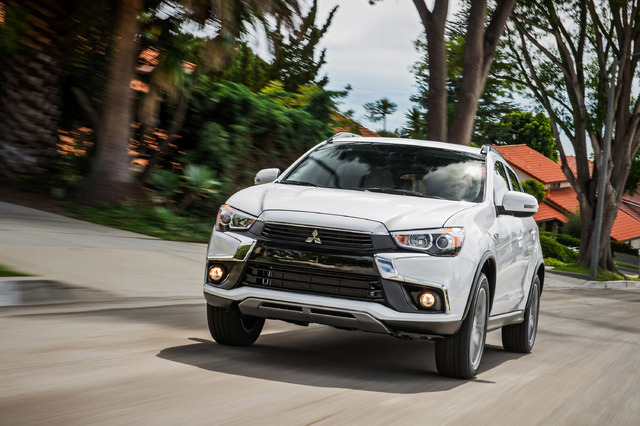Mitsubishi Outlander Sport gets a fresh face

Some people would consider Mitsubishi an afterthought, a forgotten name amongst an array of better-known automotive brands. But the fact is the Japan-based automaker still makes some pretty solid vehicles at down-to-earth prices, including the Outlander Sport.
The reduced-length (by 16 inches compared to the larger Outlander) Sport has been a Mitsubishi staple since the 2011 model year. During the ensuing years there have been some mechanical updates, but for 2016 Mitsubishi has devised a few notable and long-overdue physical and content changes to freshen up the five-passenger Sport.
Most noticeable is a redesigned front end that Mitsubishi refers to as a “Dynamic Shield.” Casual observers might consider the nosepiece to be a cross between the Lexus NX and Honda CR-V wagons, but it’s a welcome departure from the previous open-mouth grille. Combined with new 18-inch wheels, the Sport now appears at least as sophisticated as the major players in the compact tall-wagon segment.
Interior adjustments consist mainly of upgraded seat coverings, a new leather-wrapped steering wheel and the increased use of soft-touch material around the instrument panel, which also gets new high-contrast gauges.
In back, the Sport carries over with the same 60:40 split-folding and reclining bench seat. Since the distance between the front and rear wheels is identical to that of the longer seven-seat Outlander, passenger room is virtually identical between the two while maximum cargo space is about 30 percent less for the Sport.
Motivating the Sport is a choice of two engines that also carry over unchanged from the 2015 model. The base 2.0-liter four-cylinder engine produces 148 horsepower and 145 pound-feet of torque. A 2.4-liter four-cylinder, which was added as an option for the 2015 model year, makes 168 horsepower and 167 pound-feet.
A five-speed manual transmission can be had with the 2.0, while a continuously variable unit (CVT) is available with that powerplant, but is standard with the 2.4.
Mitsubishi has made upgrading to the more robust engine so financially painless (a mere $500 option) and the difference in fuel economy so inconsequential (24 mpg in the city and 31 mpg highway, versus 23/28 for the 2.4) that it makes little sense to select the 2.0.
The penny-pinching base Sport ES front-wheel-drive model equipped with the manual gearbox is priced at $20,500 (with destination charges). For that modest sum, you get an expected array of basic content along with a few extras such as heated outside mirrors, alloy wheels and a rear spoiler.
The SE adds climate control, pushbutton start, 6.1-inch display, heated front seats and a rearview camera, while SEL goodies include leather seat coverings, power driver’s seat, power-folding outside mirrors and fancier interior and exterior trim.
At the pinnacle of the Sport lineup, the GT comes with a panoramic sunroof, high-intensity discharge headlights and a 710-watt Rockford Fosgate-brand audio system. Surprisingly, the navigation system is optional.
For $1,400 more — and well worth the price — all-wheel-drive (called All-Wheel-Control) can be added to any of the four Sport models.
Missing from the roster is the latest active-safety technology that’s available in virtually every other vehicle in the Outlander Sport’s class. You won’t find lane-departure warning, cross-traffic alerts, active cruise control, lane keeping assist and forward-collision alert/mitigation.
What the Sport can brag about is one of the more impressive warranties in the business. Basic bumper-to-bumper coverage with roadside assistance is for five years or 60,000 miles, while powertrain coverage runs for 10 years or 100,000 miles.
With Nissan set to acquire 34 percent of Mitsubishi, it will be interesting to see if, or how, Mitsubishi’s product lineup is expanded/updated. The popular Outlander Sport certainly deserves to be brought up to date as more buyers are opting for compact wagons over sedans.